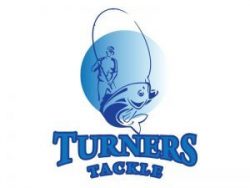Weighing In: A Guide to Different Types of Sea Fishing Weights Used in the UK
When it comes to sea fishing in the United Kingdom, choosing the right type of weight is a crucial aspect of your tackle setup. Fishing weights serve multiple purposes, from keeping bait in the desired location to providing casting stability. In this article, we’ll explore the various types of sea fishing weights commonly used in the UK, each designed for specific fishing conditions and target species.
- Split Shot:
- Description: Small, individually pinchable lead weights.
- Usage: Ideal for adjusting the depth of your bait, split shots are commonly used in freshwater and inshore sea fishing. They allow anglers to fine-tune the presentation of their bait.
- Swivel Leads:
- Description: Lead weights with a built-in swivel to reduce line twist.
- Usage: Swivel leads are popular for beach and shore fishing. The swivel minimizes line twisting caused by the movement of the lead, making them effective for presenting bait in areas with strong currents.
- Grip Leads:
- Description: Lead weights with wire grips to anchor into sandy or mixed seabed.
- Usage: Grip leads are excellent for holding position in strong tidal currents. The wire grips dig into the seabed, providing stability and preventing the weight from rolling in the current.
- Breakaway Leads:
- Description: Modular lead weights that can release from the mainline on impact.
- Usage: Breakaway leads are popular for casting long distances from beaches or cliffs. They help reduce the risk of the lead becoming snagged, as it can release upon impact with the water.
- Flat Pear Leads:
- Description: Pear-shaped lead weights with a flattened side.
- Usage: Suitable for use in various sea fishing scenarios, flat pear leads offer stability on the seabed. They are effective for holding bottom in moderate currents.
- Ball Leads:
- Description: Round lead weights.
- Usage: Ball leads are versatile and commonly used for general sea fishing. They provide a stable anchor on the seabed and are suitable for a range of species in different conditions.
- Bass Booms:
- Description: Wire-based boom systems with a weight at the end.
- Usage: Bass booms are popular for shore and boat fishing targeting bass. The boom helps prevent the rig from tangling, and the weight ensures the bait remains close to the seabed.
- Downtide Leads:
- Description: Lead weights with an elongated shape to enhance bottom contact.
- Usage: Designed for boat fishing in deeper waters, downtide leads offer increased contact with the seabed, ensuring that your bait stays in the strike zone for species like cod and conger eels.
- Drift Leads:
- Description: Streamlined lead weights with minimal drag.
- Usage: Drift leads are used when fishing from a drifting boat. Their streamlined design reduces resistance in the water, allowing anglers to cover a larger area while presenting baits at different depths.
- Trolling Weights:
- Description: Heavy, bullet-shaped weights used for trolling.
- Usage: Trolling weights are essential for anglers targeting pelagic species like mackerel or trolling for larger game fish. They help maintain the desired depth and control the speed of the lures.
Conclusion:
Selecting the right sea fishing weight is a critical decision that can significantly impact your fishing success. Each type of weight serves a specific purpose, catering to the diverse conditions and species found in UK waters. Whether you’re casting from the shore, drifting in a boat, or targeting specific species, understanding the characteristics and applications of different sea fishing weights will enhance your angling experience along the coast.

